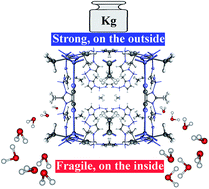Stability of zeolitic imidazolate frameworks: effect of forced water intrusion and framework flexibility dynamics†
Abstract
Stability of metal–organic frameworks is one of the central issues for their successful usage in an increasingly wide range of applications. Particularly Zeolitic Imidazolate Frameworks (ZIFs) are known for their high stability. Herein we use the two most stable representatives ZIF-8 and ZIF-67 to show that the concomitant effect of pressure and temperature upon water intrusion/extrusion cycles is strikingly higher compared to the separate effects of either pressure or temperature and leads to previously unobserved irreversible structural changes. We also explore the effect of compression–decompression speed on the pronounced breathing effect of indicated ZIFs as part of high-pressure operation and show that framework relaxation time may be very long and should be taken into account for potential applications.



 Please wait while we load your content...
Please wait while we load your content...